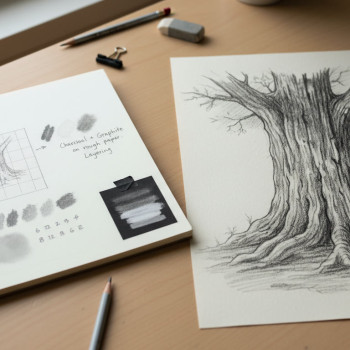Introduction: Why Choosing the Right Conservation Matters
If you’ve ever stared at an AP Physics free-response question and thought, “Should I conserve energy or conserve momentum?” — you’re not alone. That split-second decision can be the difference between a clean, elegant solution and a messy, error-prone one. In this post we’ll walk through the reasoning, the signs to watch for, practical recipes you can use under time pressure, and several carefully chosen examples that mirror the kinds of problems you’ll see on the College Board AP Physics 1, AP Physics C: Mechanics, and other AP-level physics assessments.

The Big Picture: What These Conservation Laws Mean
Before we commit to a strategy, let’s briefly restate what each conservation law tells us and the assumptions behind them.
Conservation of Energy (Mechanical Energy)
Conservation of mechanical energy says that in an isolated system with only conservative forces (like gravity and ideal springs), the sum of kinetic and potential energy remains constant. Mathematically: KE_initial + PE_initial = KE_final + PE_final, provided there’s no non-conservative work (like friction) or external energy input.
Conservation of Momentum (Linear Momentum)
Conservation of linear momentum applies to the total momentum of a closed system when no external net force acts on the system. For collisions and sudden interactions, momentum is often the cleaner quantity to use. Mathematically: Σp_initial = Σp_final (vector sum). This is especially useful during very short interactions where external impulses are negligible compared to internal forces.
Quick Decision Rules: When to Use Which
Here are practical heuristics you can memorize and apply in an exam situation. Think of them as a checklist you run through in the first 10–20 seconds after reading a problem.
- If the problem involves a collision (objects bumping, sticking, or rebounding) and you are asked about velocities immediately before and after the collision, reach for momentum first.
- If the interaction is smooth and involves height changes, springs, or rolling without slipping and there is no significant frictional heat loss, energy is often the simplest path.
- If the system is isolated during the event (no external horizontal forces during a short collision), momentum is conserved; if conservative forces dominate and you can ignore non-conservative losses, mechanical energy is conserved.
- If you need the detailed distribution of energy (e.g., how much thermal energy is produced) or if non-conservative forces do work, energy bookkeeping is necessary.
- When in doubt, write both conservation statements down — they’re short — and see which gives you a usable equation without extra unknowns.
Two Core Examples — Side by Side
Seeing comparable problems solved with different conservation principles will solidify your intuition.
Example A: Inelastic Collision — Two Carts on a Track
Scenario: Cart A (mass m) moves right at speed v and collides with stationary Cart B (mass m). They stick together. Find their speed after the collision.
Why momentum? The collision is short and the sticking means kinetic energy is not conserved (some becomes internal energy). Momentum is conserved because external forces (like track friction or external pushes) are negligible during the short collision.
Equation: m v + m(0) = (m + m) v_final → v_final = v / 2.
Example B: Block Sliding Down a Frictionless Ramp
Scenario: A block of mass m begins at rest at height h on a frictionless ramp. Find its speed at the bottom.
Why energy? Gravity is conservative and no non-conservative forces are doing work. Use conservation of mechanical energy to relate potential to kinetic.
Equation: m g h = 1/2 m v^2 → v = sqrt(2 g h).
Comparison Table: How to Choose Under Pressure
| Signal in the Problem | Use Momentum If… | Use Energy If… |
|---|---|---|
| Collision, impact, very short interaction | Yes — especially if objects stick or if kinetic energy isn’t conserved. | No — KE often not conserved in inelastic collisions. |
| Height change, springs, rolling motion without slipping | No — momentum may still be conserved but less directly useful. | Yes — convert between PE and KE easily. |
| External forces doing work (friction, applied pushes) | Maybe — if external impulse is negligible during the event. | No — include work done by non-conservative forces and track energy loss. |
| Need vector directions (angles, components) | Yes — momentum is vectorial; conserve components. | Often unnecessary — energy is scalar and ignores direction. |
Worked Problem: Combined Use of Both Laws
Some of the most elegant AP problems ask you to combine both principles. Here’s a classic two-stage setup that tests both your understanding and your ability to pick the right tool at each stage.
Problem: Projectile After a Collision
Imagine a small ball of mass m is launched horizontally at speed v and collides elastically with a larger block of mass M resting on a frictionless horizontal surface. After collision, the block moves forward and the small ball rebounds with speed v’. Later the ball falls off the table and you are asked about the block’s speed and the ball’s energy components. Outline the solution strategy.
Strategy and reasoning:
- Step 1 — Collision: Since the collision is elastic and short, both momentum and kinetic energy are conserved during the collision. Set up two equations: conservation of horizontal momentum and conservation of kinetic energy. Solve for v’ and the block’s speed V.
- Step 2 — Post-Collision Motion: Once you have velocities, you can use kinematics or energy depending on what’s asked next (e.g., if the ball rises to a height, use energy to relate its post-collision speed to that height).
Why this sequence matters: The collision step is solved using momentum and (if elastic) energy; the subsequent motion often needs energy or kinematics. Writing down all conservation statements early prevents forgetting key constraints under time pressure.
Exam-Ready Checklist: How to Write a Clean Solution
AP graders reward clarity. Here’s a short checklist to make your solution look methodical and confident.
- State the system and timeframe clearly: e.g., “Consider the two-cart system during the collision (short time interval Δt) — external horizontal forces are negligible, so momentum is conserved.”
- Write down the conservation equation(s) immediately, labeling knowns and unknowns.
- Be explicit about assumptions: frictionless, isolated, rigid connection, elastic vs inelastic.
- If using momentum for vector quantities, conserve components separately and indicate directions with signs or arrows.
- Check units at the end: m/s for velocity, J for energy, kg·m/s for momentum.
- If your first method yields an algebraically messy route, state an alternate approach briefly — sometimes a short mention of energy or momentum gives the grader confidence you understand the physics even if algebra got tangled.
Common Mistakes and How to Avoid Them
These are recurring traps students fall into — knowing them in advance saves time during studying and prevents lost points on the exam.
1. Confusing “No external force” With “No external horizontal force”
Momentum conservation applies only in the direction(s) where net external impulse is negligible. For example, a puck on a frictionless table colliding with another puck conserves horizontal momentum; vertical forces from gravity and the normal force don’t affect horizontal momentum.
2. Applying Energy Conservation Across an Inelastic Collision
In many AP-style collision problems, kinetic energy is not conserved if objects stick or deform. Use momentum for velocities after collision; energy considerations can include the energy lost as thermal or internal energy, but you must account for it explicitly.
3. Forgetting the Scalar vs Vector Nature
Energy is scalar; momentum is a vector. Don’t cancel or ignore signs in momentum problems. If motion occurs in two dimensions, conserve momentum separately in x and y.
4. Not Checking Whether Rotational Effects Matter
For rolling objects or extended bodies, angular momentum and rotational energy may be relevant. AP Physics 1 and C include rotational units — know when to include rotational kinetic energy (1/2 I ω^2) and angular momentum (L = I ω or r × p).
Practice Set — Try These (with Styled Hints)
Practice is where intuition becomes reliable. Try these versions of classic problems. Time yourself and write full explanations as if a grader is reading.
- Problem 1: Two masses on a frictionless track collide and stick. Given m1, m2, and initial v1, find the final speed. (Hint: Momentum only.)
- Problem 2: A mass compresses a spring and then is released to climb a frictionless incline. Given spring constant k, compression x, and height h reached, find the relation between x and h. (Hint: Energy conversion from spring to gravity.)
- Problem 3: A bullet embeds in a block on a horizontal surface and the block slides with kinetic friction. How far does the block slide? (Hint: Use momentum for the collision, then energy with non-conservative work for the slide.)
How to Practice Efficiently — A 6-Week Plan
Practice with intention. Here’s a compact plan you can follow in the run-up to an AP exam or unit test. Modify the tempo to fit your school calendar.
- Week 1 — Fundamentals: Review definitions, units, and simple energy and momentum problems. Do 10 problems focusing on one-law contexts (only energy or only momentum).
- Week 2 — Vector Momentum: Tackle 2D collisions, center-of-mass motion, and impulse problems. Emphasize components and diagramming.
- Week 3 — Energy Applications: Springs, inclines, rolling objects, and work-energy with constant forces. Practice both algebraic and conceptual questions.
- Week 4 — Mixed Problems: Do combined collision + motion problems; use both laws in sequence. Time yourself on FRQ-style questions.
- Week 5 — Past AP FRQs: Solve 4–6 free-response questions from past AP exams or College Board practice materials. Write full explanations and compare against scoring rubrics if available.
- Week 6 — Mock Exam & Review: Take a practice exam section, assess weak spots, and refresh key formulas and quick heuristics.
How Sparkl’s Personalized Tutoring Fits In
Working through these problems alone will build muscle memory, but targeted feedback accelerates progress. That’s where Sparkl’s personalized tutoring can help: one-on-one guidance lets you target the exact moment you get stuck (for instance, deciding whether to conserve momentum in a 2D collision). Tutors craft tailored study plans, walk through tricky algebra step-by-step, and use AI-driven insights to track your weaknesses so each session is efficient and focused.
If you find your solutions drifting toward algebraic complexity or you repeatedly miss vector components, a short sequence of Sparkl sessions can provide the corrective tuning and confidence you need before the exam.

Scoring Insight: What AP Graders Look For
Understanding the rubric is as important as solving the physics. Graders look for a clear logical thread: explicit statements of conservation, correct use of signs and reference frames, and correct algebraic manipulation. Even if a numeric answer is slightly off due to arithmetic, a fully correct approach with correct conservation use often earns partial credit.
Key grader-friendly practices:
- Label the system and the time interval when you apply conservation laws.
- Write down the relevant conservation statement before manipulating equations.
- Keep track of vector directions; if you choose a positive direction explicitly state it.
- If you make an assumption (e.g., “neglect friction”), say so explicitly.
Real-World Context: Why These Laws Matter
Outside the exam hall, energy and momentum conservation form the backbone of everything from vehicle safety design to spaceflight. Engineers use momentum to design collision-absorbing structures; physicists use energy conservation to calculate orbital transfers. Seeing how these abstract equations predict real outcomes helps the concepts stick — both literally and figuratively.
Last-Minute Exam Day Tips
On test day, time management and clarity beat algebraic bravado. Here are rapid-fire tips you can apply in the exam room:
- Read each question once completely, then underline the words that determine whether momentum or energy is conserved: “collide and stick,” “frictionless,” “immediately after impact,” “height,” “spring,” etc.
- Write the conservation equation first and plug in what you know; don’t manipulate algebra with unknown-filled fractions if a simpler substitution exists.
- If a problem looks like it requires both laws, map the timeline (before collision, during collision, after collision) and label which law applies in each segment.
- Keep units visible while you work. Many avoidable errors arise from mismatched units or forgetting that g ≈ 9.8 m/s^2.
- When you finish, check whether your answer makes physical sense (speeds should be non-negative; final speed of stuck objects should be between initial speeds, etc.).
Resources and Next Steps
To grow beyond problem solving and into conceptual mastery, combine targeted practice with explanation-based review. Work past AP free-response questions, but also write short concept summaries for each subtopic (“When momentum conserved?”, “When energy conserved?”) and update them as you learn exceptions.
Consider periodic review sessions with a tutor to reinforce weak spots. Sparkl’s tailored study plans and expert tutors can help you convert repeated mistakes into permanent strengths by focusing sessions on specific rubrics and timing strategies used by the College Board.
Conclusion: Make the Choice, Then Own It
Choosing between conservation of energy and conservation of momentum becomes natural after practice and pattern recognition. Use momentum for short, impulsive interactions where external impulses are negligible and energy for smooth conversions between kinetic and potential energies when non-conservative losses are absent or quantifiable. When problems call for both, sequence your reasoning clearly and keep the timeline visible.
Most importantly: practice deliberately, show your reasoning, and get feedback. With the right mix of strategy, practice, and targeted help — whether through smart study partners or personalized tutoring like Sparkl’s — you’ll move from hesitating at the fork to confidently picking the right conservation law and earning the points you deserve.
Good luck — and enjoy the satisfaction of a solution that fits like a glove.




















No Comments
Leave a comment Cancel